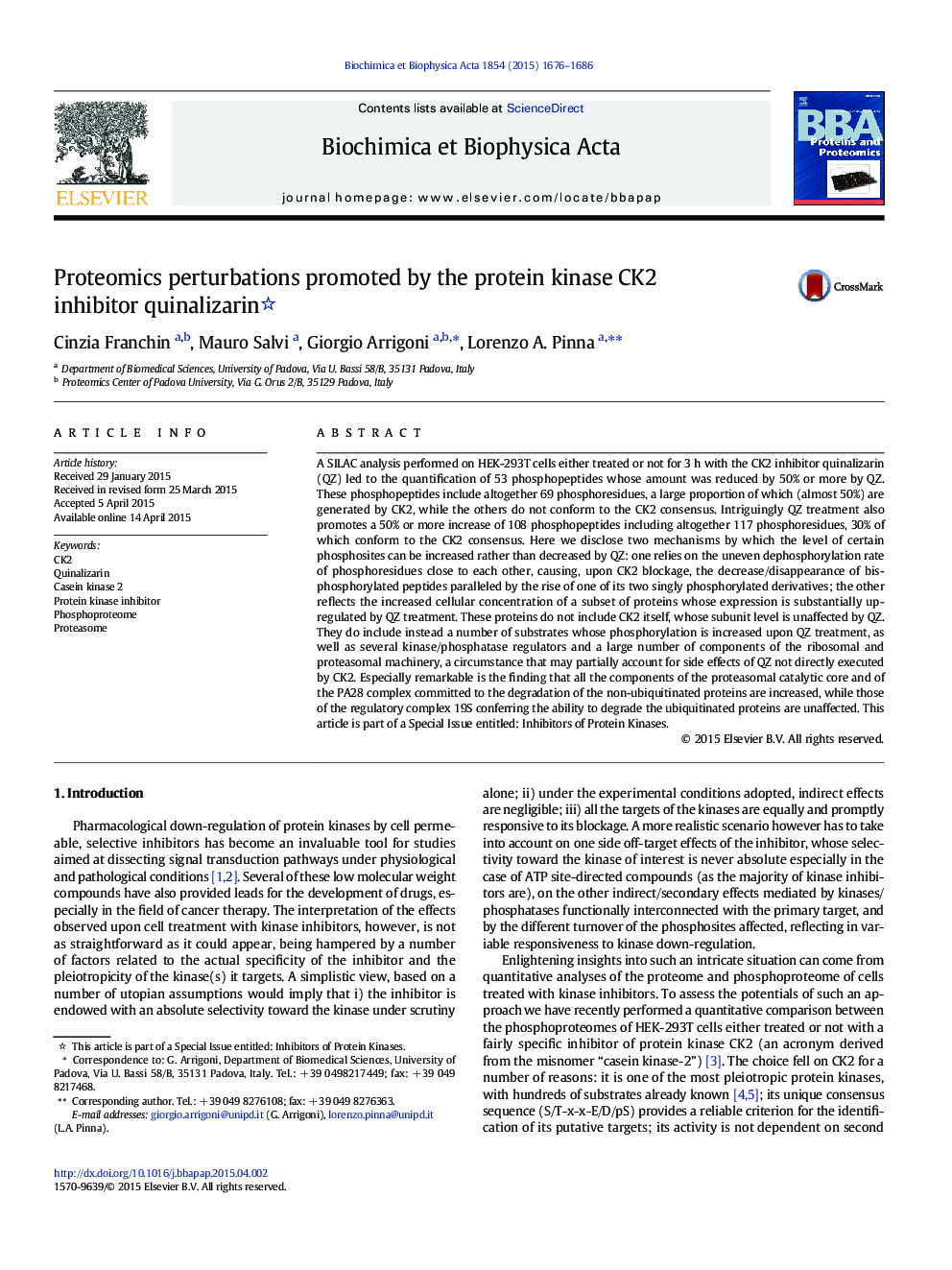| کد مقاله | کد نشریه | سال انتشار | مقاله انگلیسی | نسخه تمام متن |
|---|---|---|---|---|
| 1177745 | 962576 | 2015 | 11 صفحه PDF | دانلود رایگان |

• The CK2 inhibitor quinalizarin (QZ) causes the overexpression of 100 proteins.
• QZ also promotes the increase of 108 phosphosites.
• Some of these are accounted for by augmented proteins, others by uneven loss of P.
• Most over-expressed proteins belong to ribosomes and to the proteasome.
• Increased proteasomal proteins are committed to ubiquitin-independent degradation.
A SILAC analysis performed on HEK-293T cells either treated or not for 3 h with the CK2 inhibitor quinalizarin (QZ) led to the quantification of 53 phosphopeptides whose amount was reduced by 50% or more by QZ. These phosphopeptides include altogether 69 phosphoresidues, a large proportion of which (almost 50%) are generated by CK2, while the others do not conform to the CK2 consensus. Intriguingly QZ treatment also promotes a 50% or more increase of 108 phosphopeptides including altogether 117 phosphoresidues, 30% of which conform to the CK2 consensus. Here we disclose two mechanisms by which the level of certain phosphosites can be increased rather than decreased by QZ: one relies on the uneven dephosphorylation rate of phosphoresidues close to each other, causing, upon CK2 blockage, the decrease/disappearance of bis-phosphorylated peptides paralleled by the rise of one of its two singly phosphorylated derivatives; the other reflects the increased cellular concentration of a subset of proteins whose expression is substantially up-regulated by QZ treatment. These proteins do not include CK2 itself, whose subunit level is unaffected by QZ. They do include instead a number of substrates whose phosphorylation is increased upon QZ treatment, as well as several kinase/phosphatase regulators and a large number of components of the ribosomal and proteasomal machinery, a circumstance that may partially account for side effects of QZ not directly executed by CK2. Especially remarkable is the finding that all the components of the proteasomal catalytic core and of the PA28 complex committed to the degradation of the non-ubiquitinated proteins are increased, while those of the regulatory complex 19S conferring the ability to degrade the ubiquitinated proteins are unaffected. This article is part of a Special Issue entitled: Inhibitors of Protein Kinases.
Journal: Biochimica et Biophysica Acta (BBA) - Proteins and Proteomics - Volume 1854, Issue 10, Part B, October 2015, Pages 1676–1686